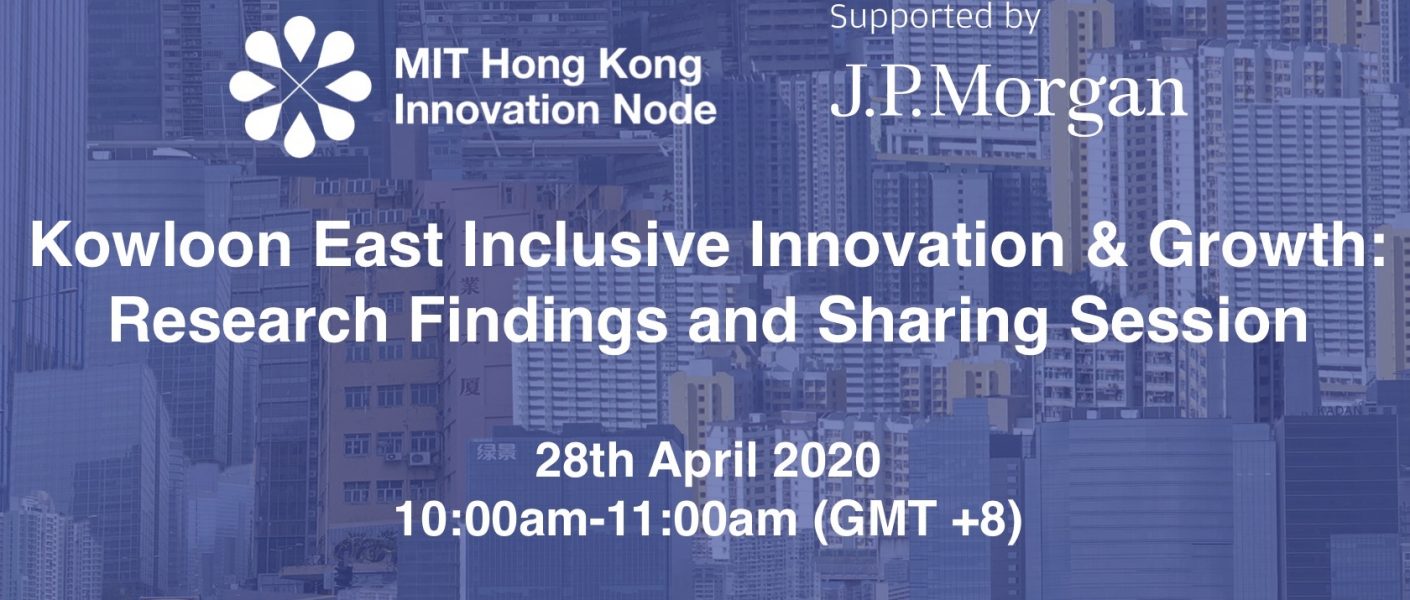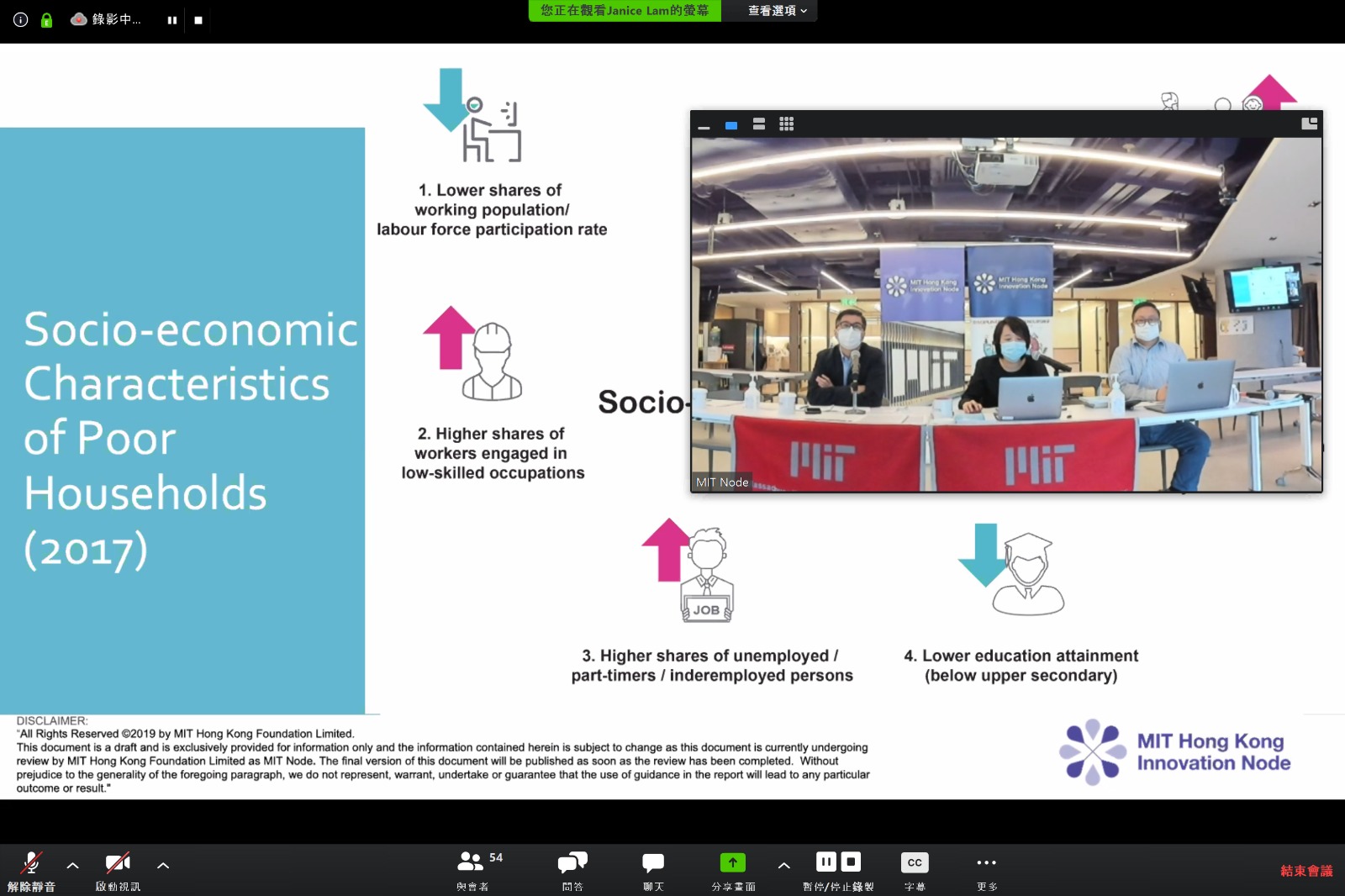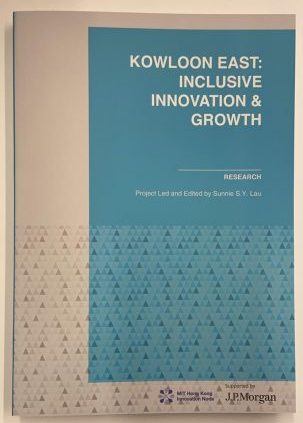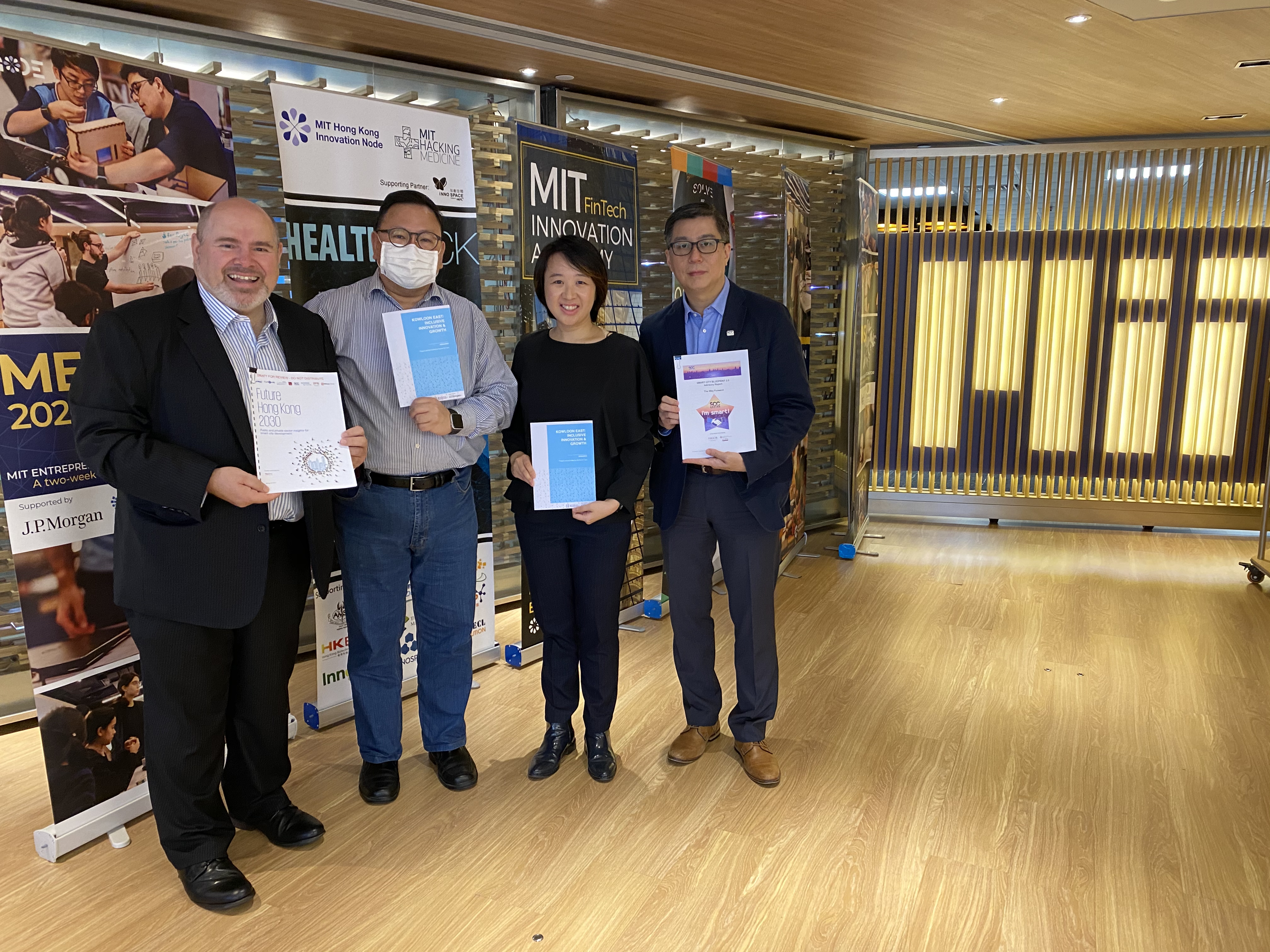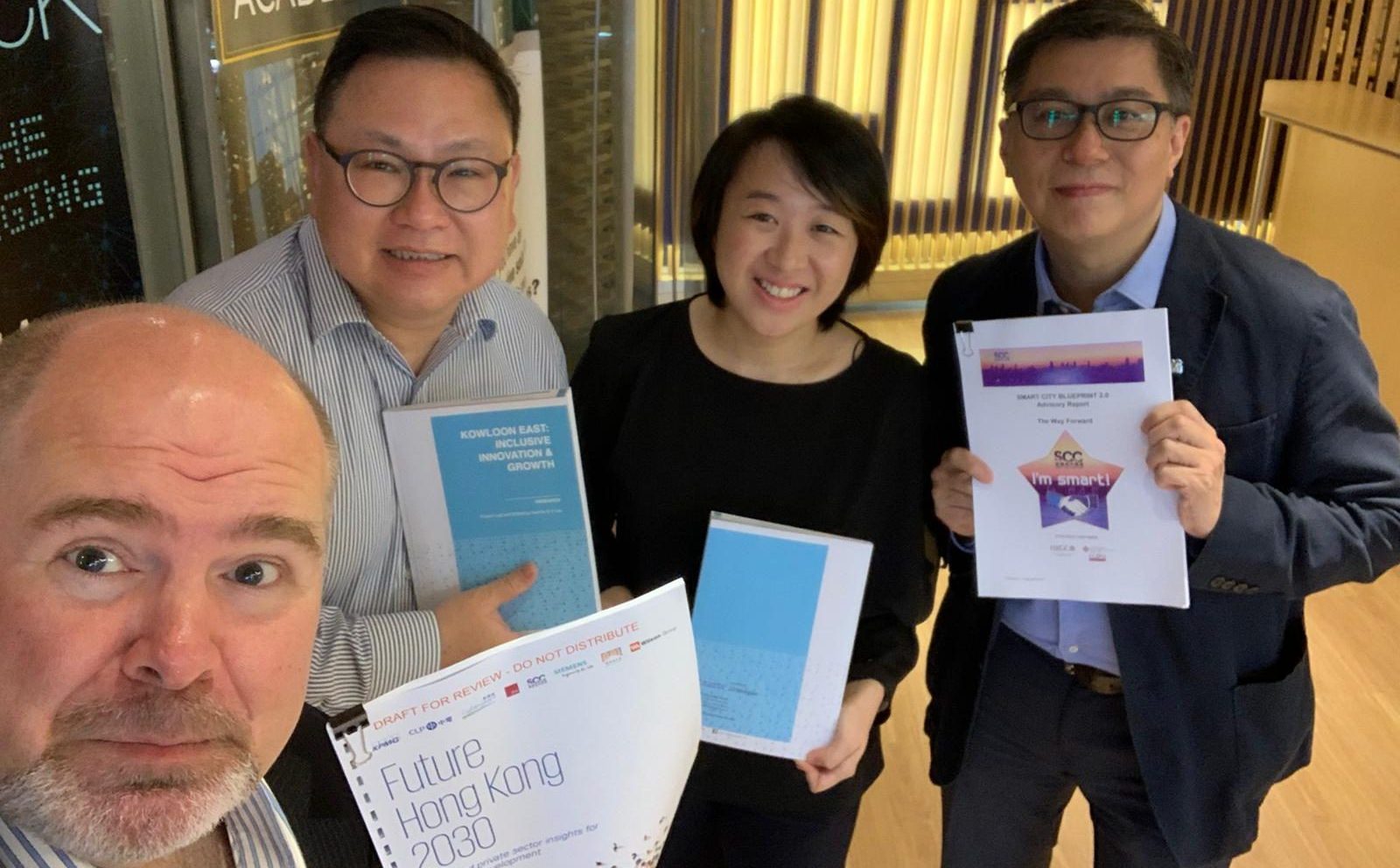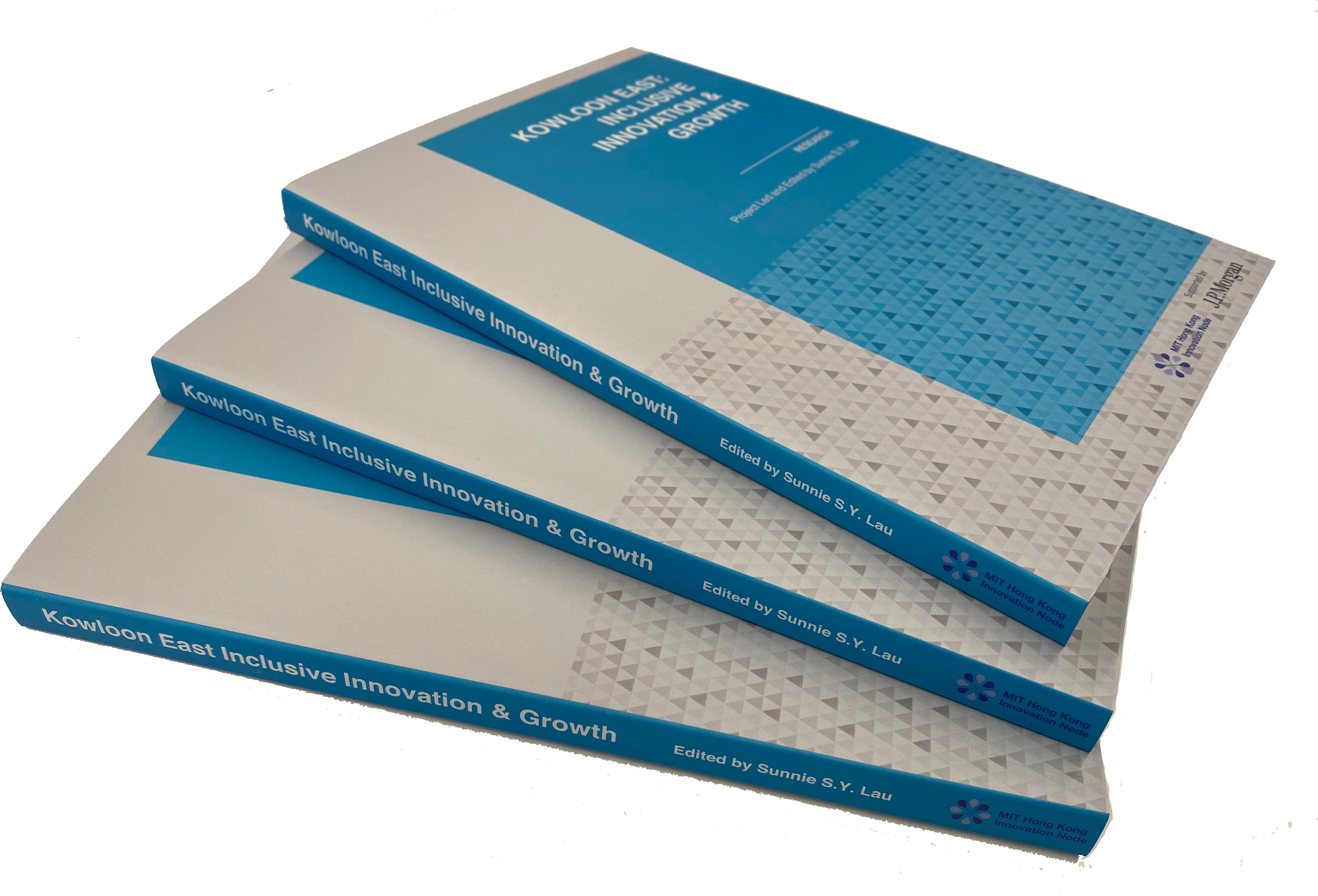“How can we better drive collaboration among public, private and non-profit organizations to support equitable workforce and small business development efforts while promoting innovative solutions? J.P. Morgan has commissioned MIT HK Innovation Node, MIT to conduct research seeking to understand the gaps and identify opportunities in Kowloon East that foster inclusive economic growth.”
Kowloon East Inclusive Innovation & Growth: Research Findings and Sharing
Under its current rapid development, Hong Kong faces increasing economic challenges and new opportunities to transform. As the traditional Central Business District (CBD) saturates, the Hong Kong Government identified the need to develop another kind of CBD- Kowloon East is currently in the spotlight for a new wave of development.
Kowloon East (Kwun Town District). Hong Kong’s poorest and most densely populated district, is currently undergoing a transition to become the second CBD. There are a set of socio-economic challenges faced by the underprivileged individuals during this urban regeneration process. How can we better drive collaboration among public, private and non-profit organizations to support equitable workforce and small business development efforts while promoting innovative solutions?
J.P. Morgan has commissioned MIT HK Innovation Node, MIT to conduct research seeking to understand the gaps and identify opportunities in Kowloon East that foster inclusive economic growth. It serves as a response to tackle the growing socio-economic disparity of the district’s development into a CBD. The ultimate vision is to promote an inclusive, smart, innovative and human-oriented CBD2 in Kowloon East.
This one-hour webinar discussion will focus on sharing some key takeaways from this yearlong field research led by Sunnie S.Y. Lau. Director from the MIT Hong Kong Innovation Node. Two keynote speakers from Cambridge. Massachusetts Institute of Technology” MIT professors. Charles G. Sodini. and Brent D. Ryan – are going to join us with respective insights on how to meet these challenges.
The invisible boundary dividing Hong Kong’s CBD2 and the 750.000 residents living in Kwun Tong is too glaring even to be naked eye. On a typical weekday morning, a 1-million-strong workforce commutes into Kowloon East and a sizeable portion of local residents makes their way out of the district, without interacting with each other whatsoever. As a result, Kwun Tong, despite of her surging skyline, still remains as the poorest district in the territory.
Supported and commissioned by JP Morgan, MIT HK Innovation Node (“Node”) undertook the challenge to looking into tearing down these barriers in Kowloon East. Prof Sunnie Lau, Director of Smart City Research and Industry Collaboration of the Node, led the charge and shared her key takeaways to a very engaging web audience on 28 April 2020.
Prof Lau suggested that NGOs, public and private sectors can work together to leverage the women and youths of Kowloon East to bridge the socio-economic gap. Creation of innovative environment for co-working & networking, upskilling and job counselling, will be conducive for stay-home mothers and youths to participate. With this new found flexibility for the underprivileged and unemployed, thriving economies of start-ups like co-ops and SMEs will emerge as they start to uncover their Hong Kong entrepreneurial spirit.
“Smart Cities is about people, not technology.”, Charleston Sin, the Executive Director of the Node, reminded the audience about how the Node addressed this inclusivity challenge. This was echoed by Prof Charles Sodini, the Faculty Director of the Node, and Prof Brent Ryan, Head of City Design and Development Group in MIT.
In a bumper 3-day of heavyweight smart cities reports releases, this Kowloon East one was preceded by Blueprint 2.0 co-authored by HK Smart City Consortium (“SCC”) and will be followed by KPMG’s annual smart cities report on the next day. Mr Daniel Chun, Chairman of Research and Blueprint Commission of SCC, was on-site to introduce the very comprehensive report they submitted to ITB and OGCIO. Mr Chun presented a “Double-Smart” approach to counter the “double-ageing” phenomenon in HK’s buildings and population. On a similar note, Mr Anson Bailey, Head of Technology, Media & Telecoms in KPMG, shared passionately about their endeavour to converse environment, connect GBA and ASEAN, as well as enable collaboration between startups and enterprises.
— Summarized by MIT Node’s Smart City Subject Matter expert Dr. Eddie Hui
SPEAKERS
Charles G. Sodini. Faculty Director. MIT Hong Kong Innovation Node. Lebel Professor of Electrical Engineering and Computer Science, MIT
Brent D. Ryan. Associate Professor of Urban Design and Planning; Head. City Design and Development Group, MIT
Sunnie S.Y. Lau. Director of Smart City Research and Industry Collaboration, MIT Hong Kong Innovation Node. MIT
MODERATOR
Charleston Sin. Executive Director – MIT Hong Kong Innovation Node, MIT
Published in May 2020:
Team list
– Project Leader :
- Sunnie S.Y. Lau, Director of Smart City Research and Industry Collaboration, MIT Hong Kong Innovation Node, MIT.
– MIT Faculty Advisors:
- Charles G. Sodini. Faculty Director. MIT Hong Kong Innovation Node. Lebel Professor of Electrical Engineering and Computer Science, MIT.
- Brent D. Ryan. Associate Professor of Urban Design and Planning; Head. City Design and Development Group, MIT.
– Research & Editorial Team:
Dining Liu, Chiyu Wu , Safina K.Y. So , Ellena O.L. Wong, Theodora Karamanlis
Webcast Presentations and Executive Summary File for Downloads:
April 28_Event Details
MITNODE_Kowloon East Inclusive Innovation & Growth Executive Summary
Webcast – Kowloon East Presentation

